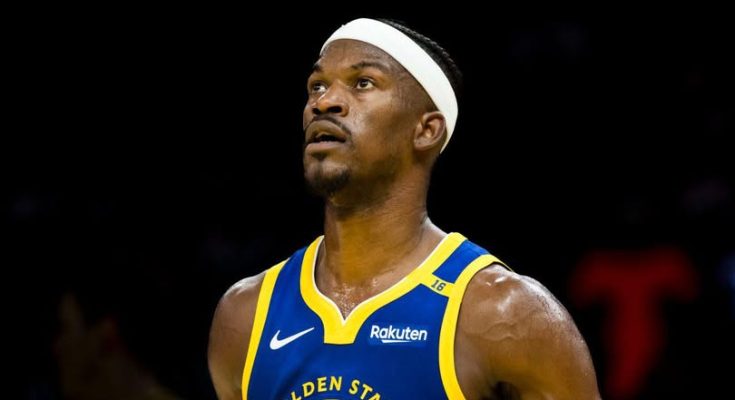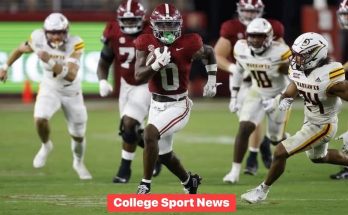The NBA is more than just a league—it’s a theater of high drama, loyalty battles, and economic power plays. Every trade, contract, and free agency decision tells a story far beyond what the stat sheet reveals. In one of the more polarizing narratives of recent memory, ESPN has stirred the pot with a compelling claim: the Golden State Warriors, once hailed as the NBA’s gold standard for loyalty and culture, have reportedly prioritized financial strategy over allegiance to one of their own. According to sources, the Warriors declined to match a lucrative three-year deal offered by the Boston Celtics—a move many see as choosing money over a player who wanted to stay, only to be lured away by a \$74.2 million offer and a separate \$4 million signing bonus.
This isn’t just a discussion about salary caps and luxury taxes. It is a story about how the business side of basketball can create tension with the emotional bonds formed on the court. For years, the Warriors had prided themselves on being a “family-first” organization, with a track record of keeping their core together. But as contracts balloon and younger players demand bigger roles and bigger paychecks, even the most loyal franchises are forced to make hard choices. When the Boston Celtics stepped up with an aggressive offer, it wasn’t just about outbidding the Warriors—it was about leveraging a franchise’s shifting priorities.
The player at the center of all this—unnamed for now by the original report but unmistakably someone of high regard—was allegedly stunned by Golden State’s unwillingness to engage competitively. ESPN’s sources paint a picture of a player who made it known to Warriors brass that he wanted to stay, but was ultimately pushed toward an exit because of the organization’s unwillingness to extend themselves financially. The Celtics saw an opportunity, offered not only the \$74.2 million but sweetened the deal with a rare \$4 million signing bonus—a figure that, while minor compared to the whole contract, symbolized something deeper: a desire to be wanted.
From a financial standpoint, it’s easy to see the Warriors’ logic. The team has long been hovering in dangerous luxury tax territory, and with the NBA’s new collective bargaining agreement creating harsher penalties for overspending, Golden State had to take a long, hard look at its future sustainability. Already paying max contracts to Stephen Curry, Klay Thompson (who may not be there much longer himself), Draymond Green, and newer additions like Andrew Wiggins, the front office likely viewed another large contract as a long-term liability.
Yet fans don’t connect to cap sheets—they connect to players. And when a franchise decides to part ways with someone who has poured their heart and soul into the organization, it sends ripples through the locker room and fanbase alike. Loyalty is not just a buzzword in professional sports; it’s a bond that gives meaning to the grind. When players like this one believe they’ve given everything to their team only to be left chasing dollars elsewhere, the wounds don’t heal easily. The implication from ESPN’s reporting is that this departure wasn’t necessary—it was calculated.
The Celtics, for their part, are not innocent bystanders in this saga. They knew what they were doing. Boston has had a quietly aggressive offseason, bolstering a roster that already boasts championship pedigree. With Jayson Tatum and Jaylen Brown anchoring the team, and a coach in Joe Mazzulla who has clearly earned the front office’s confidence, the Celtics are moving like a franchise that believes its window is wide open. Bringing in a player with the caliber and experience of a former Warrior adds depth, maturity, and perhaps most critically, playoff-tested grit. Boston’s front office isn’t just spending money—they’re making statements.
This situation becomes even more layered when considering the cultural dynamic. The Warriors have always branded themselves as different. They’re Silicon Valley, not Wall Street. They celebrate open-mindedness, innovation, and emotional intelligence. This is a team that was applauded for sticking by Klay Thompson during his two-year injury recovery and re-signing Draymond Green despite his polarizing personality and locker room antics. But as with any organization, there’s a limit to sentimentality. And when the financial stakes reach hundreds of millions, sentiment can start to feel like a liability.
The player’s reaction, as reported, reflects this tension. He didn’t leave because he didn’t feel valued by his teammates or coaches. He left because the front office made a calculated business decision to let him go. And while no one can blame an executive team for thinking long-term, the optics of losing a beloved player to a direct competitor—and doing so for financial reasons—will haunt Golden State’s narrative for years.
What makes this saga especially intriguing is the timing. The NBA is entering an era where player empowerment is at an all-time high, but teams are becoming more cautious with cap flexibility. The middle class of the NBA—players who aren’t superstars but who are indispensable to winning—is being squeezed from both ends. They’re expected to deliver like stars but paid like role players unless another team comes calling. When Boston made their offer, it was more than competitive—it was respectful. They treated the player as someone worth investing in now and in the future.
Contrast that with Golden State’s approach: a team built on long-term thinking, culture, and patience, now signaling that even pillars of their past success can be considered expendable if the books demand it. To long-time observers of the league, this marks a potential philosophical pivot. The Warriors may still be loyal in principle, but they’re becoming increasingly pragmatic in practice.
From a broader educational lens, this case is a perfect example of how modern NBA franchises must constantly walk the tightrope between culture and commerce. Every team wants to keep its best players, but every team is also bound by the rules of the CBA, luxury tax penalties, and the realities of aging rosters. The calculus becomes even more complex when you consider personality dynamics, team chemistry, and the future of younger players rising through the ranks. Do you invest in the known commodity or create space for the next generation?
Golden State seems to have chosen the latter. Whether that decision proves wise or shortsighted will be judged in time. But what is undeniable is the impact this has had—not just on the departing player but on the locker room and community that had embraced him. Loyalty in the NBA is often marketed but rarely tested under the microscope of millions. And when it fails the test, the aftershocks resonate far beyond the hardwood.
The Celtics, now with their newest acquisition, gain more than just talent—they gain momentum. And they do so at the expense of a team that once looked unbeatable. The player, meanwhile, finds himself in a new uniform but with a clear message: he was wanted, valued, and pursued. And sometimes, that’s all a player really needs to elevate his game to the next level. If he flourishes in Boston, this story will only grow louder, a lingering “what if” that trails the Warriors’ every playoff exit.
For younger fans and those studying the NBA’s inner workings, this moment is a lesson in the dual nature of professional sports. It is a game of passion and loyalty—but also one of cold economics and forward planning. The jerseys may not change often, but the forces that determine who wears them are always evolving. The key is understanding that behind every press release and press conference lies a story with emotional and financial stakes. This one just happened to put both on full display.
And while no one knows what the next chapter will hold for either the player or the franchise, one thing is certain: loyalty has a price tag in the NBA. Sometimes it’s paid. Sometimes it’s not. But when it’s not, it’s always noticed. And in this case, it was broadcast to the world by the biggest sports network in America, cementing it as yet another reminder that even dynasties must answer to the bottom line.



